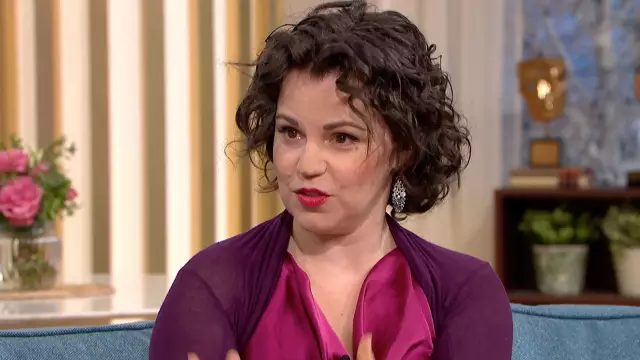- Author Rachel Wainwright [email protected].
- Public 2024-01-15 19:51.
- Last modified 2025-11-02 20:14.
How to prevent cerebral stroke: primary and secondary prevention of the disease
The content of the article:
- What causes a cerebral stroke
- Stroke prevention measures
- Stop Stroke Diet
- Stroke symptoms
- Video
How to prevent a stroke? This issue is a serious medical and social problem, since the problems of ischemic and hemorrhagic stroke are becoming more and more urgent every year. This is due to the widespread prevalence of the disease, as well as the high percentage of disability and mortality associated with it.
According to medical statistics, in the first month after a stroke, every fifth patient dies, and within the next year - every tenth survivor. Less than 40% of patients recover completely. The rest have neurological disorders that cause the onset of persistent disability of one degree or another.
Patients who have had a stroke and are not taking medication prescribed by their doctor have a 35% risk of having another stroke. With regular therapy, it is more than halved and amounts to 15%.

A healthy lifestyle is the main method of both primary and secondary prevention of stroke
What causes a cerebral stroke
Depending on the characteristics of the pathological mechanism of development, acute cerebrovascular accident is divided into two types:
- Ischemic (cerebral infarction). Its development is caused by a complete or partial cessation of the blood supply to a certain area of the brain, associated with blockage of an artery by a thrombus or embolus (in rare cases, the cause is squeezing of the vessel by a tumor).
- Hemorrhagic (cerebral hemorrhage). It develops as a result of rupture of the wall of a blood vessel and the outflow of blood into the thickness of the substance of the brain or under its membranes.
The causes of each type of stroke are different. So, the ischemic form of the disease can lead to:
- atrial fibrillation;
- acute myocardial infarction;
- heart valve prostheses;
- conditions occurring with an increase in blood clotting;
- dilated cardiomyopathy;
- thromboendocarditis;
- congenital and acquired heart defects;
- atherosclerosis of the aorta, carotid arteries and cerebral vessels;
- addiction;
- infectious lesions of the central nervous system, including those caused by HIV infection;
- vasculitis of various origins;
- some hereditary diseases (Hippel-Lindau disease, neurofibromatosis).
The causes of hemorrhagic stroke are most often:
- arterial hypertension;
- significant physical stress;
- ruptures of the cerebral aneurysm;
- trauma;
- amyloid angiopathy;
- hemorrhagic diathesis;
- the presence of a fistula between the carotid artery and the cavernous sinus;
- encephalitis;
- anticoagulant treatment;
- the introduction of vasoconstrictor drugs.
In fact, any type of stroke is a complication of a disease that affects the cardiovascular system or affects blood coagulation.
The factors that increase the risk of developing a stroke are:
- sedentary lifestyle (physical inactivity);
- hypertension (high blood pressure);
- obesity;
- improper eating habits (abuse of salty, spicy and fatty foods);
- alcohol abuse;
- smoking;
- systematic stress;
- coronary heart disease;
- type I and II diabetes mellitus;
- arrhythmia;
- high blood cholesterol;
- hereditary predisposition;
- hormonal contraception in women who smoke or suffer from varicose veins;
- age over 50.
It is possible to prevent stroke by eliminating the causes and risk factors for the development of the disease.

Hypertensive patients need to control blood pressure, and if it rises significantly, immediately take action
Stroke prevention measures
The most effective method for avoiding stroke, as well as the occurrence of a number of other diseases, is to maintain a healthy lifestyle. In the countries of Western Europe, where the population's concern for their lives and health has become the norm, the incidence rate has decreased by more than half compared to 1972. This fact is the best confirmation that proper nutrition, sufficient level of physical activity and rejection of bad habits (smoking, alcohol abuse) can reduce the likelihood of strokes, a number of diseases of the cardiovascular system, musculoskeletal system and malignant neoplasms.
Many factors that increase the risk of developing acute cerebrovascular accident, patients can control. How this can be done becomes clear from the table.
| Risk factor | How to control |
| Arterial hypertension | One of the main causes of both ischemic and hemorrhagic stroke is high blood pressure. People prone to hypertension or suffering from it need to have a tonometer at home and be able to use it. In the event of a significant increase in blood pressure, seek medical attention. It is necessary to regularly take antihypertensive drugs prescribed by a doctor. |
| Cardiovascular diseases | It is necessary to be regularly observed by a cardiologist or vascular surgeon (depending on the specific disease) and carefully follow all the instructions of the attending physician. |
| Smoking | Quitting smoking can reduce the risk of stroke by 4 times. If you cannot do this on your own, then you can use the Alain Carr method, nicotine patches, or seek help from a psychologist. |
| Diabetes | With diabetes mellitus, patients should be monitored by an endocrinologist, daily monitor blood glucose levels, adhere to dietary nutrition (table No. 9 according to Pevzner) and receive the necessary medication (insulin, hypoglycemic drugs). |
| Obesity | Excess body weight contributes to an increase in blood pressure, an increase in the concentration of cholesterol and triglycerides in the blood, and the development of metabolic syndrome. If you cannot normalize it on your own, you need to contact an endocrinologist or nutritionist. You should adhere to a low-calorie, and at the same time balanced diet developed by specialists, while increasing your level of physical activity (regular walks in the fresh air at a brisk pace, swimming, water aerobics). |
| Alcohol abuse | Alcohol abuse causes serious harm to the body and causes many diseases. You should give up this bad habit. |
| Blood clotting disorders | If the patient has conditions accompanied by increased blood coagulability, or he receives anticoagulant therapy for any reason, a coagulogram should be performed regularly. If violations are detected, the doctor prescribes their correction. |
| Atherosclerosis | After reaching the age of 40, blood cholesterol and triglycerides should be determined annually. In case of their increased concentration, it is necessary to consult a doctor to prescribe the necessary treatment (diet, statins). |
Stop Stroke Diet
Scientific studies carried out in different countries of the world have revealed a relationship between dietary habits and the incidence of acute cerebrovascular accident. In particular, a diet based on fish, vegetables, fruits and grains reduces the risk of stroke by 35%. Abuse of such foods as chips, confectionery, animal fats, meat and meat products with a high content of salt and fat (sausage, smoked, etc.), salty and spicy foods, on the contrary, increase the likelihood of stroke by almost 60%.
According to nutritionists, the Stop-Stroke diet should be based on a dairy-vegetable diet and must include the following foods:
- dairy products of low fat content - milk and dairy products (kefir, fermented baked milk, yogurt, sour cream, cottage cheese, cheese) are a source of calcium, magnesium and potassium. These trace elements help lower blood pressure;
- fatty fish - saturates the human body with omega-3 fatty acids, which suppress inflammation in the walls of blood vessels, reduce the risk of blood clots;
- soy, almonds and oats - can reduce blood cholesterol levels, improve the functions of the hepatobiliary system and intestines; rich in magnesium - a trace element necessary for the normal functioning of the central nervous system;
- tomatoes - contain a large amount of substances with pronounced antioxidant activity. Eating tomatoes helps to improve the processes of microcirculation, lipid metabolism, suppress the activity of inflammation in the walls of blood vessels;
- bananas, raisins, prunes, potatoes - foods rich in potassium. According to scientific studies, a potassium intake of less than 1.5 grams per day increases the risk of stroke by almost 30%. However, these foods are also high in calories, so their consumption should be limited to reasonable limits so as not to lead to the development of obesity;
- cocoa beans, chocolate - research by neurologists at the University of Stockholm School of Medicine showed that a weekly intake of 65 g of dark chocolate reduces the risk of both ischemic and hemorrhagic stroke by 18%.
It should be borne in mind that some food products may be incompatible with the medications you are taking. For example, the indirect anticoagulants given for atrial fibrillation and deep vein thrombosis should not be combined with green tea, raspberries, eggs, cabbage, and green vegetables.
This limitation is due to the fact that these products contain large amounts of vitamin K, which is an indirect anticoagulant antagonist. At the same time, the administration of anticoagulants based on a direct thrombin inhibitor does not require any dietary restrictions.
Proper nutrition, moderate physical activity, careful intake of medications prescribed by the doctor play a major role in the prevention of not only stroke, but also diseases of the cardiovascular and musculoskeletal system.

The basis of the diet should be a balanced dairy-plant diet.
Considering all of the above, it becomes clear that in order to prevent a stroke, a healthy person only needs to adhere to the general principles of a healthy diet and lifestyle in general. But if the patient has any diseases, and he receives drug therapy, then the doctor will develop an anti-stroke diet, under his supervision, the lifestyle correction is carried out.
Stroke symptoms
You can suspect the development of a stroke in a patient by the following signs:
- acute intense headache, dizziness;
- violation of coordination of movements;
- sudden weakness in the limbs on one side;
- nausea, vomiting;
- numbness of one half of the face;
- visual impairment;
- paralysis of one half of the body;
- loss or noticeable difficulty in speaking;
- hearing loss, up to and including its complete loss;
- violations of muscle tone.
If these symptoms appear, an ambulance should be called to the patient immediately. Early initiation of treatment is the main prevention of the development of complications and severe consequences of stroke.
Video
We offer for viewing a video on the topic of the article.

Elena Minkina Doctor anesthesiologist-resuscitator About the author
Education: graduated from the Tashkent State Medical Institute, specializing in general medicine in 1991. Repeatedly passed refresher courses.
Work experience: anesthesiologist-resuscitator of the city maternity complex, resuscitator of the hemodialysis department.
Found a mistake in the text? Select it and press Ctrl + Enter.






